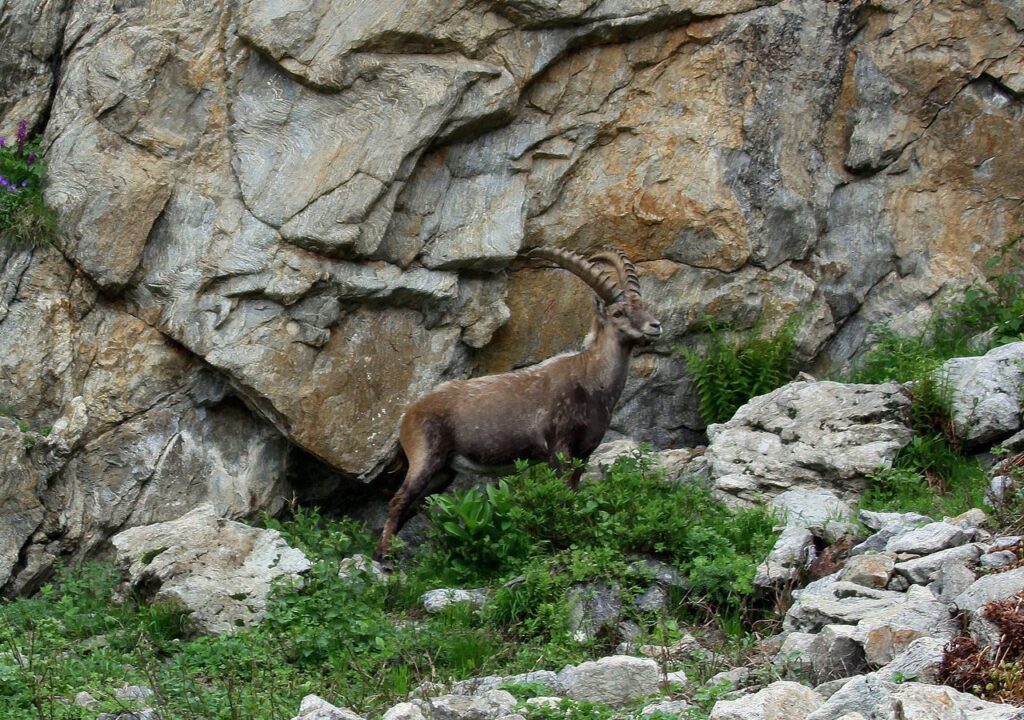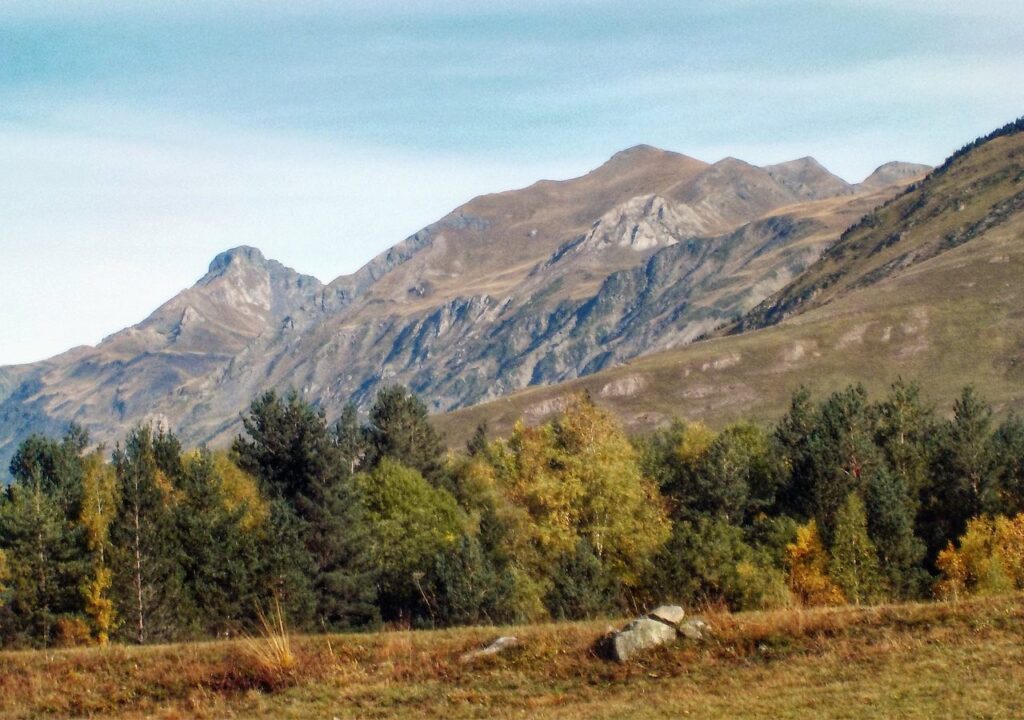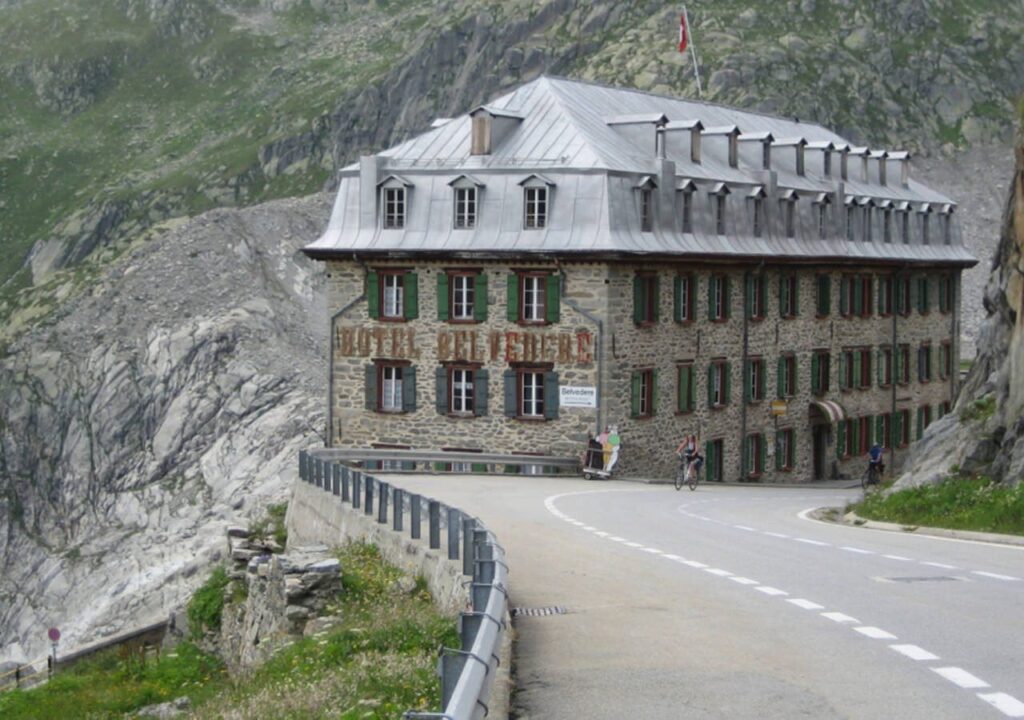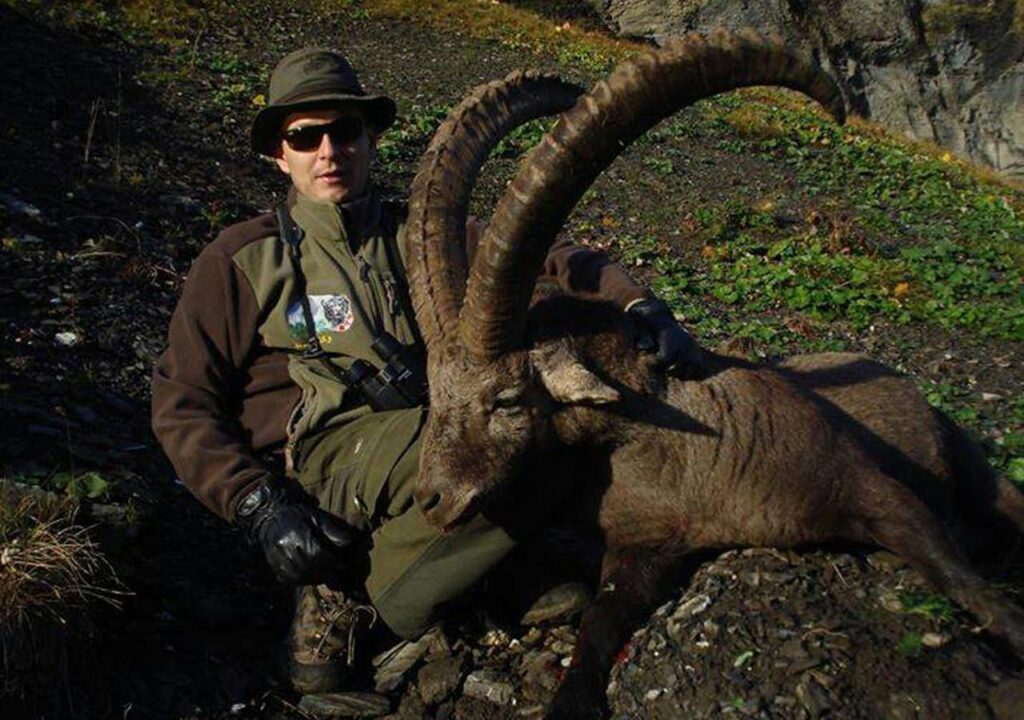SCIENTIFIC CLASSIFICATION
Order: Artiodactyla
Family: Bovidae
Subfamily: Caprinae
Genus: Capra
Specie: Capra ibex
Subspecie: Capra ibex
Body height: 59 to 67 in / 149-171 cm
Weight: 148- 258 lb / 67-117 kg
DESCRIPTION
It is a sexually dimorphic species with larger males who carry larger, curved horns. The coat colour is typically brownish grey. Alpine ibex tend to live in steep, rough terrain above the snow line. They are also social, although adult males and females segregate for most of the year, coming together only to mate. Four distinct groups exist; adult male groups, female-offsping groups, groups of young individuals, and mixed sex groups.
Compared with other members of its genus, the Alpine ibex has a short, broad head and a duller coat. It has brownish grey hair over most of the body, a pale abdomen and slightly darker markings on the chin and throat and in a stripe along the back. They moult twice a year, firstly in April or May, and then again in September, when they replace the short summer coat with thicker hair and a woolly undercoat.
Alpine ibexes have large, backwards-curving, horns with numerous ridges along their length. At 69 to 98 centimetres (27 to 39 in), those of the males are substantially larger than those of females, which reach only 18 to 35 centimetres (7.1 to 13.8 in) in length.
GEOGRAPHIC RANGE
The Alpine ibex (Capra ibex), also known as the steinbock or bouquetin, is a species of wild goat that lives in the mountains of the European Alps, and is now found in most of all the Italian and French alpine ranges, southern Germany, Switzerland and Austria. It was also introduced to Bulgaria and Slovenia.
HABITAT
An excellent climber, its preferred habitat is the rocky region along the snow line above alpine forests, where it occupies steep, rough terrain at elevations of 1,800 to 3,300 metres (5,900 to 10,800 ft). Alpine ibex are typically absent from woodland áreas although adult males in densely populated areas may stay in larch and mixed larch-spruce woodland if there is no snow.
ACCOMMODATION
Lodging is provided in hotels very close to the hunting area.
HUNTING SEASON
1st october to 15th November.
HUNTING METHOD
Hunting is arranged by stalking in National Reserves and.
TROPHY LENGTH
| SCI | STANDARD | BOW |
| Bronce Score | 65 | 59 |
| Silver Score | 84 6/8 | 0 |
| Gold Score | 92 2/8 | 84 4/8 |
| CIC | STANDARD | |
| Bronce Score | 165 | |
| Silver Score | 157 | |
| Gold Score | 150 |




